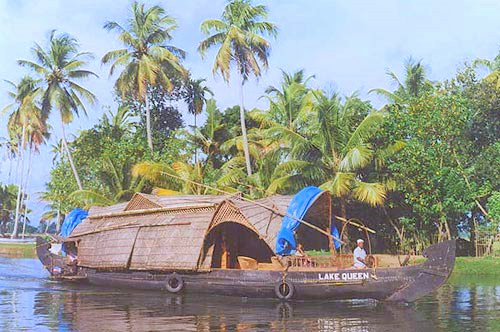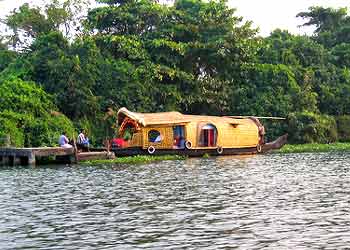Vembanad Lake /Vembanad Kayal / Vembanad Kol
One of Asia's largest freshwater lakes, the Vembanad Kayal, as it is locally known, is a giant reservoir and a major ecological resource. The dense vegetation on its banks is a wonderful sight. The boats that ply on the lake vary from the large cargo carriers with mat-roofs to the houseboats.It covers an area of 200 km², and is bordered by Alappuzha, Kottayam, and Ernakulam districts. The lake lies at sea level, and is separated from the Arabian Sea by a narrow barrier island. Canals link the lake to coastal lakes to the north and south. Several rivers flow into the lake, including the Achenkovil, Manimala, Meenachil, Muvattupuzha, Pamba and Periyar. The lake surrounds the islands of Pathiramanal, Perumbalam and Pallippuram.
The port of Kochi (Cochin) is located at the lake's outlet to the Arabian Sea. The town of Alapuzha (also known as Allepey), is sometimes called the "Venice of the East" for its large network of canals that meander through the town. The Vallam Kali (the Snake Boat Race) held every year in August is a major attraction.
Vembanad Lake is designated a wetland of international importance under the Ramsar Convention.
Located in Cochin. It is the northern extension of Vembanad Lake. From Kochi Azhi to Munambam Azhi, the serene backwaters popularly known in this name – Veeranpuzha. It is also known by the name Veerampuzha, Veeranpuzha is the name of Vembanadu Lake at Vyppen Island. In early 80’s there were regular ferry services from Munambam to Ernakulam. Though it stretches from Ernakulam to Munambam, Veeranpuzha’s Nayarmbalam part is the most scintillating landscape. You can never forget the sight in your lifetime.
However, even today, very few tourists visit Veeranpuzha. People are still not aware of the beauty of the place. Very recently some resorts have come up on the banks of the lake.
The most attractive factor about this part of the lake is that it is an isolated area allowing good privacy. The area has large paddy fields devoid of human habitation. Non-availability of fresh water is a reason for lack of dense human settlements.

